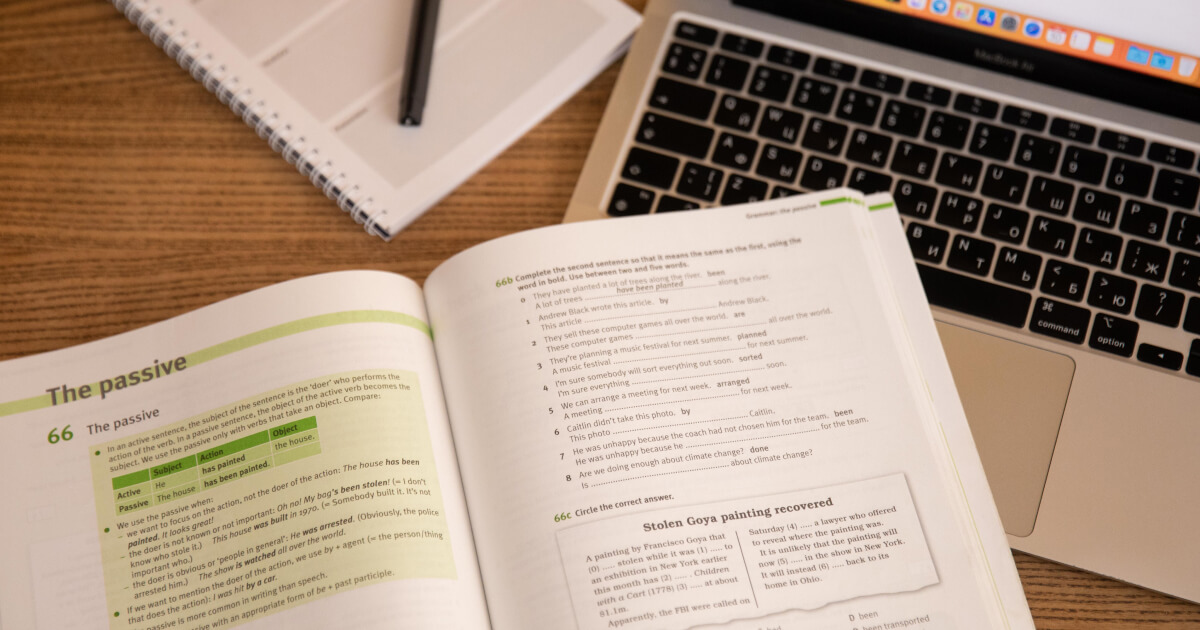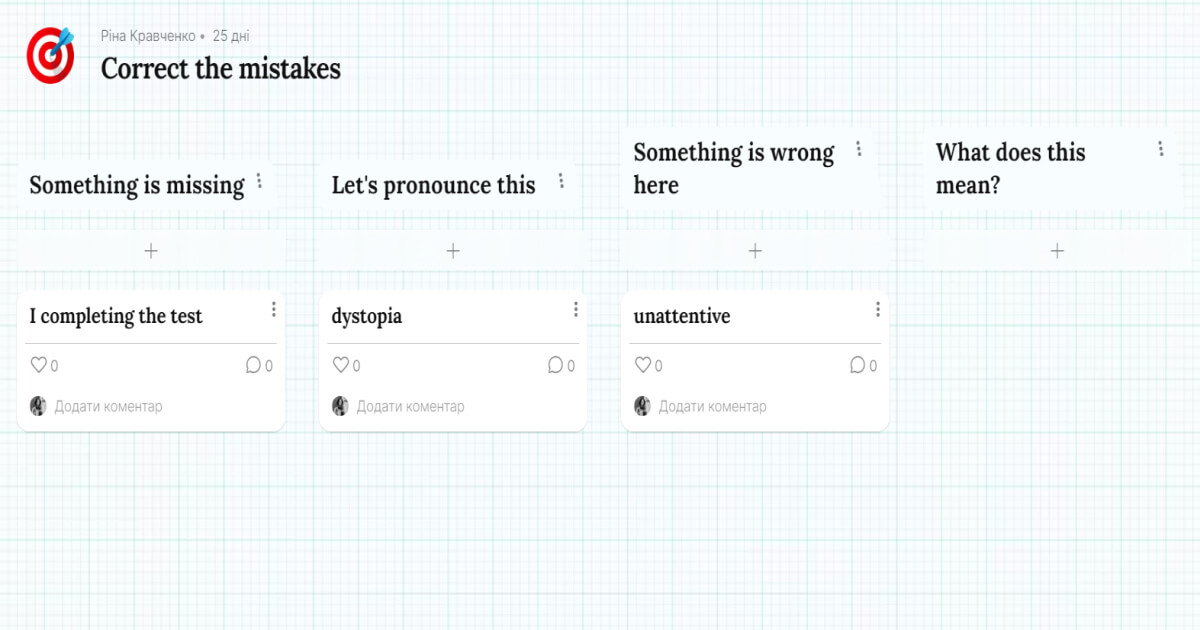What preposition games and activities can you use in an EFL/ESL classroom?
- Teaching qualifications
- Activities
- Tips & Strategies
- Methodology

22.12.2023
Few of us would disagree that one of the most crucial things we can provide our students with is correction. However, do we know for sure how to do it in the most effective way possible?
In this article, we are going to discover on-the-spot correction as well as its strengths and weaknesses.
How to deal with errors?
When a teacher corrects a student's error as soon as it is made, it is known as on-the-spot correction.
That means spotting the mistakes and correcting them straight away as the main aim of on-the-spot correction is to let your students know how their answers can be improved.
Having only a short overview above, we can assume that if the mistake must be corrected right away, it is probably done through the interruption, interference and constant assistance of the teacher.
On the one hand, nothing is wrong about constant assistance and the majority of the students just can’t get it elsewhere. That means they definitely need some correction.
On the other hand, interrupting your students and interfering all the time might have a huge influence on their progress, especially when it comes to learners of lower levels. And unfortunately, this influence is mostly negative.

Deal with errors
Plan CELTA lessons with usImagine you only started your language journey. You don’t know a lot of things, everything is new, hard, and a little bit scary. You are probably anxious about making too many mistakes as the last time you learnt something from scratch was during school time, which makes you, an adult, more used to the accomplishments rather than failures. It takes a lot of effort for you to speak and implement all the grammar rules and target language into your answers.
However, as soon as it seems that you are making some progress, your teacher starts interrupting you after every sentence commenting on what can be done differently.
You definitely appreciate the contribution, attentiveness and willingness to help, but you just can’t process all the oral comments and use them straight away to quickly correct your answers.
Moreover, you find yourself overthinking your answers and now you speak too slowly.

At the same time, your classmates seem to get fewer comments from the teacher that is why you start feeling uncomfortable, unmotivated and upset. Overthinking leads you to the dependency on your teacher’s validation, and now you are anxious to talk when a more experienced person is not around.
These are some typical problems for classes where teachers use only on-the-spot correction.
Interrupting students frequently to fix little errors can be discouraging and distracting.
Students will experience pressure and develop an obsession with accuracy as a result. Their fluency will suffer when they get fixated on accuracy as well.
At the same time, on-the-spot correction is not necessarily bad. However, we as teachers should always keep in mind that the main objective of learning a language is to communicate effectively and fluently.
How to use CLIL to improve your students' speaking?
No wonder that every time an ESL teacher hears a mistake, they want to correct it immediately. Is it right, though?
Surprisingly, the teacher doesn’t have to correct every single mistake for a variety of reasons.
Sometimes it simply makes no sense because the person who only starts learning Present Simple is not supposed to use Conditional Type 2 correctly. In this case, you may simply ignore the mistake, as it is done due to the lack of knowledge rather than lack of attention.
It may also happen that students, especially beginners, make too many mistakes and it is simply demotivating to cover them all in your feedback. Here comes the art of focus because every teacher has to be able to focus on priorities and pick up the mistakes worth commenting on.
Finally, if you see that the student is super uncomfortable and stressed out, the last thing you want to do is to make them even more anxious. Everything takes time, and it’s OK to focus on fluency more.

As you can see, there are a bunch of reasons to correct or not correct certain mistakes.
The main rule in choosing the way of correction is putting the lesson’s goals and students’ priorities first.
It’s normal to skip some errors if you have a lot of other stuff to drill. It’s not a crime to put off instant correction if the student has just started feeling more confident, etc.
The teacher has to be attentive to the needs of the students, their mood, and generally be very empathetic when it comes to on-the-spot correction.
What is a delayed error correction?
Well, if on-the-spot correction is not the best option, what is? Plus, how do we know when it is the best time to interfere?
Now, we are going to look through some common cases which might need correction.
| When to use on-the-spot correction/ Instant correction | When to use delayed correction |
| If the student makes a mistake in the piece of the target language which they can easily correct as soon as you pay attention to it. | If students have a conversation together, the worst thing the teacher can do is to interrupt the flow. |
| If the student explicitly asks for help or correction. | If students complete a certain task and use English to reflect on the task. Don’t interrupt the process. It’s great and rare if your students try to think in English! |
If the main priority of the student is accuracy and you have made a deal to work with every single mistake. However, even in this case you are likely to refer to delayed correction if the student has significant problems with accuracy. | If the aim of the task is to build fluency. |
| If the student can’t complete the sentence without your help. | Every time you feel like it’s not very appropriate to interrupt your student. |
| If the student makes some common pronunciation mistakes. The more you repeat the correct pronunciation, the better. |

To sum up, students may often feel that the lack of instant correction means that the teacher is inattentive and not helpful. However, the delayed correction session at the end of the lesson or the lesson’s block is likely to be much more memorable and effective if it is done correctly.
Use the Zoom Whiteboard or students’ chat to note the mistakes. Ask them to think before sharing the correct ideas. Make the process of error correction competitive, structured and engaging.
One of the ways to do it is using a Padlet. You may create the sections that you like and add comments while listening to the students talk, and then ask students to think about how the pinned ideas can be corrected. There are comment sections too so your class may even leave their feedback and compare it in groups:

Online tools make any part of the lesson easier and more engaging these days. Take time to learn more about them with Grade University.
Make your online classes more engaging!
Of course, some situations do require on-the-spot correction. If you find yourself in such a situation, these are some final tips to consider:
On-the-spot correction doesn’t mean that you have to rush.
Don’t interrupt your student as soon as you hear a mistake. Wait for them to finish their thought or sentence.
After letting them know about the mistake, give the student enough time to think on your comment. Yes, it might not be quick.
However, imagine coming up with an edited sentence within a minute. Sounds hard.

Sure, you should nominate the “author” of the mistake first. But don’t put too much pressure on the person if you see they struggle.
For especially anxious students the situation may even seem embarrassing. That is why feel free to engage everybody and let anyone contribute.
In this way, the tension will reduce and on-the-spot correction won’t turn into a long individual correction session with an audience who is getting more and more bored.
Finally, on-the-spot correction doesn’t require the teacher to correct the students. You may use a lot of other approaches to make students really think about their mistakes.
You may draw their attention to a slip with the intonation, emoji, some gestures or following questions like “Really? Do he spends a lot of time at home?” while stressing the incorrect places with your voice.
Experiment with what works best for your group and choose the approach that makes your lesson as student-centered as possible.
Learn more about an Engage-Study-Activate method
As you may see, on-the-spot correction is not easy to use at all. Everything matters here: students, time, goals, content, etc.
So, no wonder teachers tend to either overuse it or ignore it as something causing more problems than giving solutions.
However, with reliable teachers’ support it is always easier to improve your work and learn new stuff. Therefore, don’t hesitate to reach for it!
Does the teacher need to interfere every time they hear a mistake?
Arina Kravchenko
Author
Teacher of General English & IELTS
Comments
Leave your comment